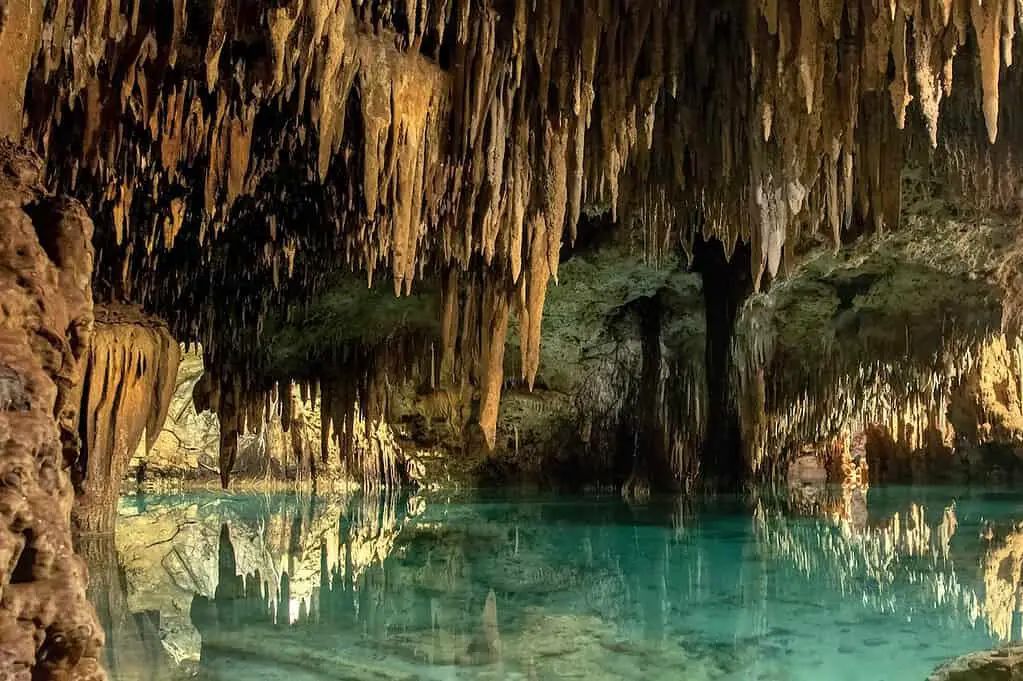So,
You have been reading up on all of the articles that I have written.
You are excited to get out there, jump into that beautiful cool water, and make memories that will last forever. Awesome.
But wait one second. We need to discuss some of the precautions we must take if we wish to preserve these magical cenotes for future generations and for the health of our planet. After all, they have been here for millions of years. We can’t just mess them up for fun, right?
Right, so in this article I’m going to cover what you shouldn’t do when visiting a cenote. The primary reason to avoid these actions in cenotes is their potential to harm the ecosystem.
Shameless plug-in time! I love discovering and sharing new wonders. If you’re a fellow journeyer, you need to get in on this. Join me and Francia in our weekly newsletter, packed with fresh blogs, amazing tips, epic history, and exciting discoveries. Don’t wait. Jump on board!
Subscribe to our newsletter!
Also, don’t forget to check out the beginning of this massive series I’ve been working on. It’s all about cenotes, and you will become an expert after you’re done reading. Discover the must-see spots, learn the intriguing history, and get all the insider tips and tricks. Perfect for travel buffs and history enthusiasts alike! Ready to dive in? (insert link)
So what do you say? Let’s Journey Together.
Table of Contents
Don’t Wear Sunscreen
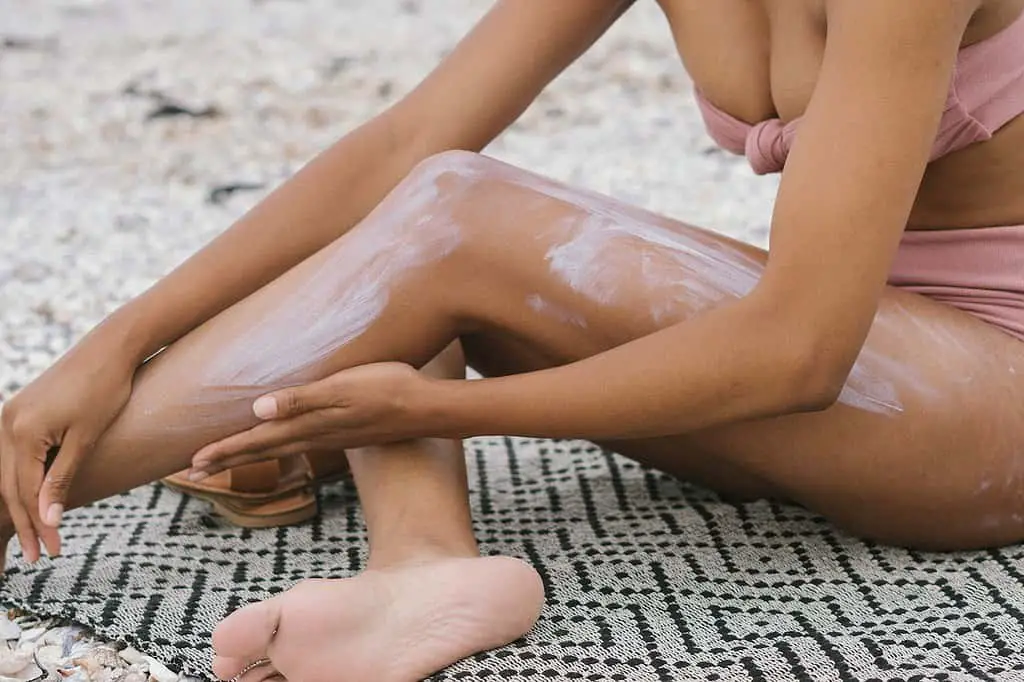
So this one might suck. I know it did for me because I burn super easily.
But why can’t you wear sunscreen in cenotes? Well, the short answer is that it contaminates the water and harms the fragile ecosystem.
There are chemicals in the sunscreen that washes off your skin and leech into the water. These can be devastating to aquatic life and basically launch Armageddon on the microorganism that works hard to keep the water clean and clear.
So What Are These Chemicals That Cause So Much Harm?
Chemical sunscreens are what we normally use. These types of sunscreens contain a chemical called Oxybenzone, which is responsible for blocking short-wave UVA and UVB radiation.
The same type of radiation that gives you the golden tan or burnt lobster man/woman look (not a good look) is not healthy either.
Now a fun fact about Oxybenzone is that it’s not particularly healthy for you too. It has been linked with a birth defect called Hirshsprung’s disease. Not just that, but it also has been found in the urine of people who have applied sunscreen recently.
What Does It Do To Aquatic Ecosystems

Besides that, not much else is known about what Oxybenzone can do to us humans. So what does it do to the aquatic ecosystems? Well, it is known to be the main factor leading to coral bleaching by promoting viral infections, which ends up leading to their death.
It also accumulates in aquatic ecosystems and impacts their growth, and it also causes reproductive harm and potentially leads to deformities.
It has also been observed to change the behavior’s of certain species of fish, leading them to become more likely to be eaten by predators. Just overall not good.
Oxybenzone And Aquatic Ecosystems
| Oxybenzone | Effect on Aquatic Ecosystems |
|---|---|
| Disrupts the endocrine system of aquatic organisms. | This can lead to a number of problems, including reproductive problems, growth problems, and death. |
| Accumulates in aquatic ecosystems. | This means that the levels of Oxybenzone can build up over time, which can have a magnified effect on the ecosystem. |
| Promotes coral bleaching. | Coral bleaching is a process where the coral loses its color and eventually dies. Oxybenzone is one of the main factors that can contribute to coral bleaching. |
| Harmful to fish, algae, and invertebrates. | Oxybenzone can be toxic to a variety of aquatic organisms, including fish, algae, and invertebrates. This can have a negative impact on the entire ecosystem. |
If you are going to be swimming cenotes or any water for that matter, it is best to avoid using sunscreens that contain Oxybenzone. There are many other sunscreens available that do not contain this harmful ingredient.
There are other chemicals in sunscreen that aren’t good either, like preserves, binders, and oils.
Alternatives To Use In the Cool Water And Hot Sun
So what do you do? Well, the first thing that I would recommend is utilizing long clothing and hats to cover up as much skin as possible. Depending on the cenote, you may be fine to remove the extra clothing due to less direct sunlight.
If you need to use sunscreen, here are some of my tips.
- Look for sunscreens that are labeled reef-safe or ocean-safe.
- Choose physical sunscreens, such as zinc oxide or titanium dioxide. These sunscreens do not absorb into the skin and are less likely to harm aquatic ecosystems.
- Avoid sunscreens that contain any of these chemicals Oxybenzone, Octinoxate, Avobenzone, or Octocrylene. These ingredients are known to harm aquatic ecosystems and are just as harmful to you.
They do sell some natural or mineral sunscreen. These don’t use chemicals to block the sun but nature compounds or even white minerals that reflect the UV rays before they hit your skin. Here is my Amazon affiliate link if you want to pick some up. Mineral Sunscreen Recommendation
No Bug Spray In Cenotes

Bug spray, oh bug spray.
I think we have all heard at some point in our lives that DEET is bad for you. But did you know it’s bad for the ecosystems as well?
What Is DEET And How It Works

DEET, which stands for N, N-Diethyl-meta-toluamide. It’s a common chemical in many insect repellents. It works by interfering with neurons and receptors located on the mosquito’s and other insect’s antennae/mouth-parts that detect chemicals such as lactic acid and carbon dioxide. (how they find living animals)
Now as you can imagine, if it does that to insects, what can it do to fragile aquatic life? Well, Even though DEET is amazing at stopping insects, it can be detrimental to aquatic ecosystems when it enters bodies of water, even in small amounts.
DEET Containing Bug Spray And The Aquatic Ecosystem Of Cenotes
When DEET enters the water, there are several things that can happen to the ecosystem. Below I have made several tables that show what those effects are based on research. I have even given the PPM for the sciences-minded amount you.
Though, I would say DEET is bad in any concertation, given that most cenotes do not have flowing water. This would only build up over time, so It can be some pretty nasty stuff!
The Effects That DEET Has On Aquatic Ecosystems
| Effect | Description |
|---|---|
| Persistence | DEET can persist in aquatic environments for long periods of time. |
| Bioaccumulation | DEET can bioaccumulate in the tissues of aquatic organisms. |
| Toxicity | DEET can be toxic to a variety of aquatic organisms, including fish, algae, and invertebrates. |
| Disruption of endocrine system | DEET can disrupt the endocrine system of aquatic organisms, which can have a cascading effect on the entire ecosystem. |
Concentration Of DEET & Its Effects
| Concentration of DEET (ppm) | Effects on Aquatic Organisms |
|---|---|
| 0.01 | No effects |
| 0.1 | Slight effects on growth and reproduction |
| 1 | Significant effects on growth and reproduction |
| 10 | Lethal to some aquatic organisms |
As you can see, DEET can have a number of negative effects on aquatic ecosystems. It is important to be aware of these effects when using DEET and to take steps to minimize the amount of DEET that enters the environment.
Studies That Go More In-Depth Into The Effect.
| Study Title | Journal | Year | Key Findings |
|---|---|---|---|
| Toxicity of N, N-Diethyl-m-toluamide (DEET) to Coral Planulae | Environmental Toxicology and Chemistry | 2003 | DEET is toxic to aquatic organisms, including fish, algae, and invertebrates. It disrupts their endocrine systems, potentially affecting entire ecosystems. |
| Persistence and Bioaccumulation of N,N-Diethyl-m-toluamide (DEET) in Aquatic Environments | Chemosphere | 2007 | DEET can persist in aquatic environments for long periods. It bioaccumulates in the tissues of aquatic organisms, increasing in concentration up the food chain. |
| Toxicity of N,N-Diethyl-m-toluamide (DEET) to Coral Planulae | Archives of Environmental Contamination and Toxicology | 2015 | DEET is toxic to coral planulae (young corals). It disrupts their development, which can lead to the death of the coral. |
So How Do You Stop Those Bugs From Biting In Cenote
So now what.

Do you just let all of the hungry creatures of the jungle bite and potentially get sick? No, of course not. I’m about to blow your mind. Some methods we already covered, and others are super simple.
Links below are some of my Amazon links. I have either used all listed products below or done research to find the best product to recommend.
- Physical/mineral sunscreen – Though not perfect, physical sunscreens, such as the one provided, have been know to help stop bug bites.

- Essential oils – Such as peppermint, lemongrass, eucalyptus, and citronella. These all have properties that insects don’t like. So you can apply some to your skin, and it should help with those bug bites. It may not be as effective as DEET, but it’s safer and healthier.

- All in one natural – These are a cross between essential oils and natural repellants, and they often utilize other herbs with properties that bugs don’t like. This one I find this to be just as effective as DEET repellents. This comes from using it in Georgia for almost 12 years, which, if you don’t know, is absolutely FULL of bugs that bite…

- Natural bug repellants – These are more recent. They still contain chemicals but are less harsh on you or the environment than their DEET alternatives. Look for ones that contain Picaridin and IR3535, yes, they are still chemical based, but they are much less harmful to aquatic ecosystems.

- Clothing – So maybe you want to stay away from chemicals. Well, there is another option you can cover up with long sleeves and long pants. Not only will this keep you safe from bug bites, but it has the added benefit of keeping you from burning in the sun, as mentioned previously.
- Stay out of the shade – you can stay out of the shade while swimming or sitting since insects will prefer the cooler air.
Now this is not to say that cenotes are swarming with insects looking to make you their next meal. Think about when you go swimming at a lake or pound. Natural bodies of water tend to be a haven for mosquitos and flies.
I’ll also put some fears to rest as well. A few bug bites aren’t going to be the end of the world if you don’t mind the itch that you may have. But for people like my father, who swells all up and has to apply ointment for weeks, it’s more of a quality-of-life thing.
In any case, use these tips, and you can protect yourself from getting itchy and possibly sick with the added benefit of keeping the waters clear and safe so that you can enjoy your time in the deep cool waters for years to come!
The Risks of Mixing Alcohol and Cenote Swimming

So this should be a simple one.
Drinking alcohol and swimming in cenotes isn’t recommended due to safety concerns. Here are some reasons why you shouldn’t drink and swim.
Impact of Alcohol on Swimming in Cenotes
| Factor | Impact of Alcohol on Swimming in Cenotes |
|---|---|
| Judgment | Alcohol consumption impairs judgment, coordination, and reaction time, compromising the ability to swim and make sound decisions, which increases the risk of accidents and drowning. |
| Increased Drowning Risk | Alcohol dulls the senses and decreases the ability to respond to dangers like underwater currents, deep areas, or submerged obstacles, leading to a higher risk of drowning incidents. |
| Lack of Lifeguards | Many cenotes, particularly in remote or natural settings, do not have lifeguards on duty. In the case of an emergency while under the influence of alcohol, there may not be immediate assistance available. |
| Disruption of Balance | Alcohol affects balance and coordination, making it harder to swim and navigate safely in the water. This can result in slips, falls, or collisions with submerged rocks or other swimmers. |
| Water Intoxication | Alcohol is a diuretic, which increases urination and can lead to dehydration. Combined with water intake during swimming, it can disrupt the body’s electrolyte balance and lead to hyponatremia, a potentially dangerous condition. |
Now I know you might think it’s fine people do it all of the time! It’s just crucial to prioritize your safety and the safety of others when enjoying cenotes.
It only takes one mistake when swimming in the potentially deep waters of a cenote, and you could be joining some of the Mayas and not in a good way…
So, if you choose to swim, do so responsibly and avoid alcohol before or during your time in the water. Always follow any safety guidelines provided by the cenote facility or local authorities and ensure you are in a clear state of mind to swim and enjoy the experience safely.
Wearing Makeup Is The Makeup Of A Cenote Disaster
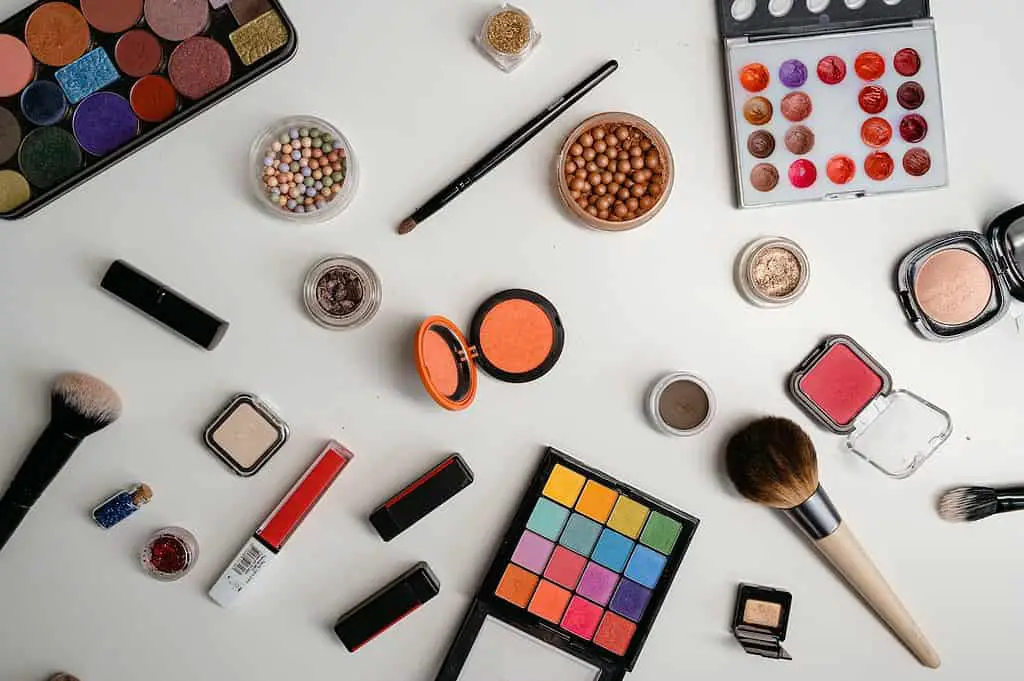
So by this point, we are probably getting tired of all the things we can’t do in cenotes. How about we look at all of the things you can do in them? I have spent close to 45 hours working on all of these articles around cenotes. So why not checkout (insert link)
If you’re still here, great! Well, wearing makeup in a cenote can cause harm to the aquatic ecosystem. How? Once you jump into that nice cool water and the makeup gets wet, it starts to wash off into the water.
Many makeups contain chemicals that can cause harm to ecosystems found in cenotes. But did you know there are 12 of them?
12 Chemicals Found In Makeup That Cause Harm To You & Aquatic Ecosystems
Something that I found out when researching this part of the article. Was that there are so many chemicals that are added to makeup that it almost blows my mind. The table below is about all of those additives and what they can do to you. The crazy thing is I just scratched the surface!
| Ingredient | Use Case | What It Contributes to End Product | Environmental Impact | Effects on Humans |
|---|---|---|---|---|
| Oxybenzone & Octinoxate | Used in sunscreens and other skincare products | Absorbs UV rays to prevent sunburn | Found in marine animals’ tissues, harmful to coral reefs, and linked to reproductive issues in marine animals | Can cause allergic reactions and hormonal disruptions |
| Parabens | Preservatives used in cosmetics | Prevents growth of bacteria and mold, extends product shelf life | Bioaccumulation in animal tissues which can transfer to large animals or us, their endocrine-disrupting effects, and potential impacts on biodiversity | Can cause Hormone Disruption, Skin Irritation, and Developmental and reproductive toxicity, and it has even been linked to breast cancer in some studies. |
| Triclosan | Used in antibacterial soaps and body washes | Can cause allergies, dermatitis, respiratory distress, and potential effects on the reproductive system | Toxic to aquatic bacteria; harmful to algae and dolphins | Can disrupt thyroid function and contribute to antibiotic resistance |
| Synthetic Fragrances | Used in beauty and hair products | Provides pleasing scent | Cause long-term damage to marine animals | Can enter the human body through the consumption of seafood, potential long-term health effects are still being studied |
| Sulfates (e.g., SLS) | Commonly used in shampoos, toothpaste, and body wash | Creates foam and lather, removes dirt and oils | Toxic to aquatic organisms | Can cause skin and eye irritation |
| Microplastics | Used in personal care products for their exfoliating properties | Provides physical exfoliation | Fish and birds mistake these tiny plastic beads for food, leading to ingestion which can be fatal | Can cause skin and eye irritation. More research is needed on hormone disruption |
| Phthalates | Used as solvents and plasticizers in many cosmetics | Increases flexibility and softness of products | Significant environmental harm due to their persistence in soil and water, their bioaccumulation in animal tissues, their overall toxicity to various organisms, their endocrine-disrupting effects, and potential impacts on biodiversity | Can disrupt hormone functions, linked to reproductive and developmental harm |
| Lead | Found in some lipsticks and other cosmetic products | Adds color, improves longevity | Harmful to both humans and the environment | Can cause neurodevelopmental toxicity, particularly in children |
| Siloxanes | Used in cosmetics to soften, smooth, and moisten | Gives a smooth and silky feel and helps products to spread easily | Can cause skin, eye, and lung irritation and, in high doses, liver cancer | Can cause skin irritation and allergies and is classified as a human carcinogen |
| Formaldehyde | Used in many cosmetic products as a preservative | Prevents growth of bacteria, extends product shelf life | Known to be harmful to the human immune system and is not environmentally friendly | hormone disruption, reproductive problems, and increased risk of certain cancers, choking hazards, and potential carriers of pathogens |
| Talc | Used in products like eyeshadow and blush | Gives products a silky texture, absorbs moisture | Can sometimes be contaminated with asbestos which is harmful to both human health and the environment | Can cause respiratory problems and is potentially linked to ovarian cancer |
| Ethanolamines | Can cause skin and eye irritation, more research is needed on hormone disruption | Used to control pH levels, act as emulsifiers | Can be harmful to aquatic life | hormone disruption, reproductive problems, and increased risk of certain cancers, choking hazards, and potential carriers of pathogens |
As you can see, there is just a ton of stuff in makeup that you wouldn’t think was there. If you guys are like Francia (my wife), she is almost always wearing something. The fact that she is almost always wearing makeup means that it is easy to forget that you have it on, which can lead to harm to the fragile waters.
Now here is my suggestion if you are going to have makeup on, that is fine (watch the health risks). Just before you go to jump in the water, use some of those makeup removal wipes to make sure your makeup doesn’t leach into the water!
Now I don’t know much about this stuff, being I’m a guy, but I asked Francia what brand of makeup removal wipes she uses and recommends, and she gave me these on Amazon https://amzn.to/3O2A6tJ. After a bit of searching, I found this an Amazon link for natural biodegradable makeup removal wipes https://amzn.to/43j3qS9
Francia’s choice

Biodegradable choice

Whichever option you choose, make sure to bring your trash home with you or throw it in a trash can if available, even if they are biodegradable. Here is a small tip for you, after you are finished swimming, you can always reapply your makeup with a small travel mirror.
Removing your makeup might be an extra step, but it can make a difference in prolonging the life of a cenote.
Use The Bathroom Beforehand
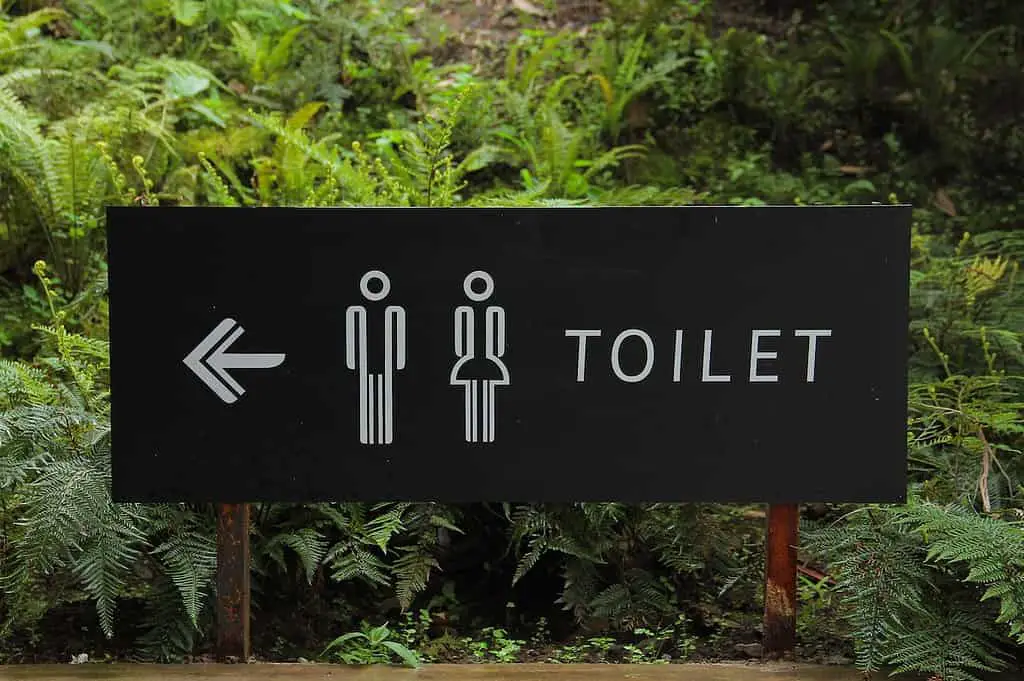
There are normally bathrooms at the cenotes that are popular with tourists, but if you’re going off the beaten path a bit, then it might be harder to use them. This doesn’t mean you should use the cenote. Doing so can lead to great harm to the fragile ecosystem that resides in them.
Urinin In The Blue Waters
Going to the bathroom in a cenote leads to high concentrations of urine in the cenote, which causes a lot of harm to the ecosystem and aquatic life.
If you think about how many people swim a year in just one of these blue wells, if each person were to urinate, it would add up quickly! Plus, many cenotes generally don’t have much of a current, which would help in washing away the waste, so it just sits there.
You would think that this is not an issue and that people know better than to urinate in the water, but did you know that many pools have a clear dye that reacts to urine and turns a vibrant blue or purple? This is done to detour people from doing it!
Fun fact:

The pool smell that everyone thinks is just the smell of chlorine is actually the smell of chlorine reacting with urine, sweat, body secretions, and oils. That will make you think twice about swimming, huh? The chemical byproducts of Chlorine breaking down these substances are the same ones responsible for the “Pool Smell” and are called Trichloramine and Cyanogen Chloride. These chemicals are also what is responsible for eye irritation and can even be damaging to your lungs. Sorry to mess up your summer.
E-coli in the waters
Another thing to think about is personal hygiene. In my other article, where I answer all of the burning questions people had about cenotes, I go into more detail about e-coli. It is defiantly worth the read! https://juntosjourneys.com/mysteries-of-cenotes-your-1-questions-answered-best/
E-coli, most commonly found in fecal matter, can come from poor hygiene or even from people/animals using the bathroom in the cenotes. Normally this isn’t an issue in chlorinated pools since chlorine kills almost everything. That’s its purpose.
But, in natural bodies of water, there are no such chemicals, just a fragile balance of animals and bacteria. So the introduction of feces to the water can lead to e-coli growing out of control, leading to health issues for both us and wildlife.
This has happened in some cases, and the Mexican authorities would have to close down a cenote to wait for the bacteria to balance out to keep people and ecosystems safe.
The good news is that there are trace amounts of E-coli in a lot of bodies of water. The human body is really good at neutralizing it before it can cause harm to you. Plus, cenotes that are open for swimming are well monitored for contaminants and their safety levels for the swimmers and the ecosystem.
So you can still have peace of mind when you swim, that you won’t get sick.
Follow these steps to keep the waters clean for everyone and everything.
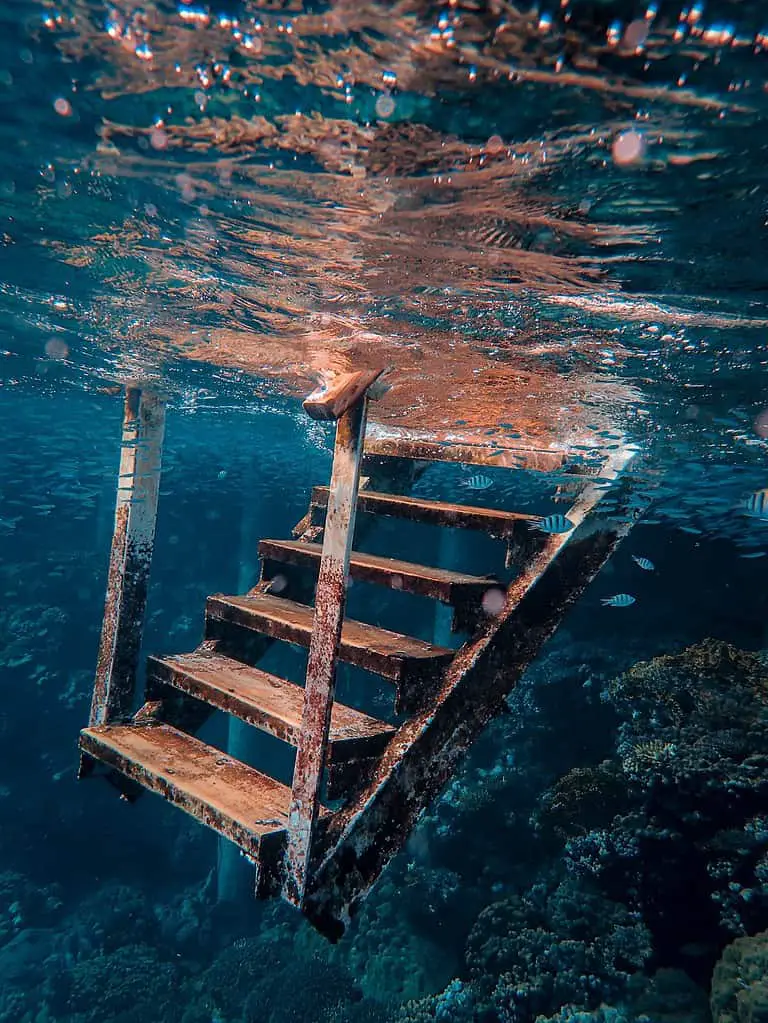
Whew, so we just covered everything that you should think about before you take the plunge. Our efforts keep the waters crystal clear and clean for everyone to swim in or for your inevitable return!
You also help to keep the delicate aquatic ecosystem safe and healthy. After all, we are borrowing their home for a cool dip!
Before you go, remember to explore the other articles of this awesome series that I’ve put together. Dive into everything about cenotes – and guess what? You’ll turn into a cenote whiz by the time you’re done reading. Spot the coolest places, uncover the things not to do, score all the best tips, and so much more. If you love traveling, history, or all of the above, this is for you! So, are you set to jump in? https://juntosjourneys.com/the-meteoric-origin-of-cenotes/
Citing
https://off.com/en/education/active-ingredients/7-myths-and-facts-about-deet
https://www.mbnep.org/2019/06/11/the-truth-about-sunscreen-its-effects-on-us-and-the-environment/
Disclaimer: This post contains affiliate links. At no cost to you, I might earn a small commission if you make a purchase through the links in this article.


